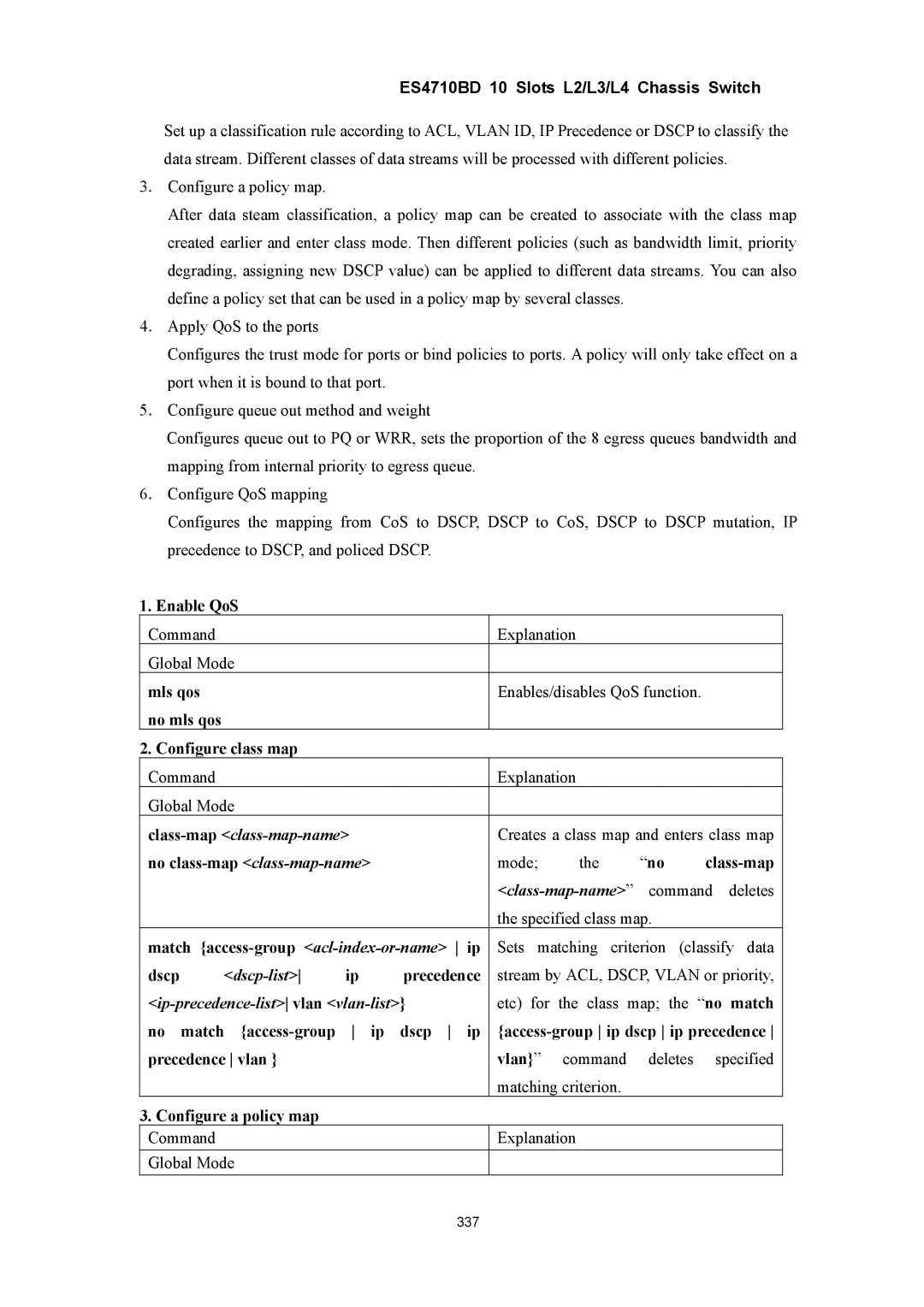ES4710BD 10 Slots L2/L3/L4 Chassis Switch
Set up a classification rule according to ACL, VLAN ID, IP Precedence or DSCP to classify the data stream. Different classes of data streams will be processed with different policies.
3. Configure a policy map.
After data steam classification, a policy map can be created to associate with the class map created earlier and enter class mode. Then different policies (such as bandwidth limit, priority degrading, assigning new DSCP value) can be applied to different data streams. You can also define a policy set that can be used in a policy map by several classes.
4. Apply QoS to the ports
Configures the trust mode for ports or bind policies to ports. A policy will only take effect on a port when it is bound to that port.
5. Configure queue out method and weight
Configures queue out to PQ or WRR, sets the proportion of the 8 egress queues bandwidth and mapping from internal priority to egress queue.
6. Configure QoS mapping
Configures the mapping from CoS to DSCP, DSCP to CoS, DSCP to DSCP mutation, IP precedence to DSCP, and policed DSCP.
1. Enable QoS
Command |
|
|
| Explanation |
|
|
|
Global Mode |
|
|
|
|
|
| |
mls qos |
|
|
| Enables/disables QoS function. |
| ||
no mls qos |
|
|
|
|
|
|
|
2. Configure class map |
|
|
|
|
|
| |
Command |
|
|
| Explanation |
|
|
|
Global Mode |
|
|
|
|
|
| |
|
| Creates a class map and enters class map | |||||
no |
| mode; | the | “no | |||
|
|
|
| ||||
|
|
|
| the specified class map. |
| ||
match | Sets matching criterion (classify data | ||||||
dscp |
| ip | precedence | stream by ACL, DSCP, VLAN or priority, | |||
| etc) for the class map; the “no match | ||||||
no match | |||||||
precedence vlan } |
|
| vlan}” command deletes specified | ||||
|
|
|
| matching criterion. |
|
| |
3. Configure a policy map |
|
|
|
|
|
| |
Command |
|
|
| Explanation |
|
|
|
Global Mode |
|
|
|
|
|
| |
|
|
| 337 |
|
|
|
|
